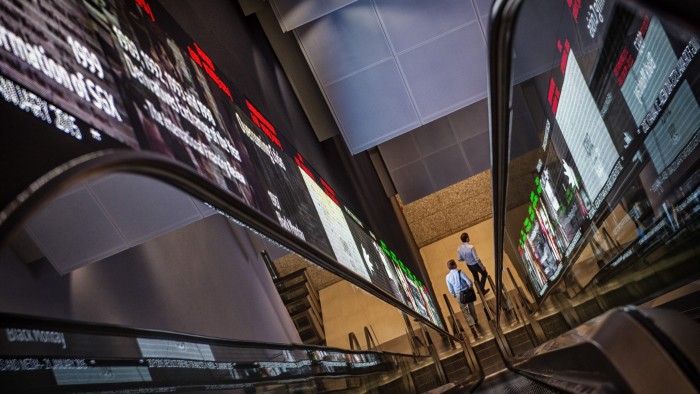
Unlock the White House Watch newsletter for free
Your guide to what the 2024 US election means for Washington and the world
Donald Trump’s return to the White House has been a boon to Asia’s currency markets as traders in the US and Europe respond to his late-night social media posts and announcements by logging on to the only open trading venues.
The first few weeks of Trump’s second term have been marked by out-of-hours policy statements in the US that have shaken markets and sent traders reeling to adjust their positions.
“It’s definitely creating a lot of demand and liquidity in the market,” said Beng Hong Lee, head of wholesale markets and platforms at SGX, the Singapore stock exchange.
“Because of the unexpected events risk — the weekend announcements and late-night social media posts — suddenly, you have London traders logging on at 1am to trade in Asia.”
The US dollar and offshore Chinese renminbi currency pair, known as USD/CNH, has emerged as the second-most traded currency futures contract in recent months, behind the dollar’s pairing with the euro.
Average daily volume in USD/CNH, which is traded in Singapore, hit $16bn in the second half of 2024, up more than 50 per cent on the previous year.
Meanwhile, average daily volume in the dollar’s pairing with the Indian rupee, which is also traded on SGX, increased 46 per cent to $1.9bn over the same period.
Since his election in November, Trump has made a series of policy announcements and U-turns, often late at night or during weekends.
They include a threat to impose tariffs on Colombia for blocking US deportation flights to the country, which was retracted hours later on the Sunday after his inauguration.
On the following Friday, the White House laid out plans for heavy tariffs on Canada, Mexico and China, which all responded that weekend with retaliatory measures. By Monday, the US had pulled back from its Canada and Mexico threats, while the levies on China went into effect on February 10.
On Sunday February 9, while on his way to watch the Super Bowl, Trump told reporters aboard Air Force One that he would impose 25 per cent tariffs on all steel and aluminium imports, hitting shares in some European and Asian producers.
The market-moving events have prompted traders to try to respond as quickly as they can, said Alexander von zur Mühlen, head of the Asia-Pacific, Europe, Middle East and Africa region, as well as Germany, at Deutsche Bank.
“European investors and corporate customers are looking to hedge themselves in Asia throughout the night because they know that if they don’t and they wake up in the morning, it could be too late and the music may have stopped,” he added.
The global foreign exchange market is open 24 hours a day throughout the week because the four main trading sessions in Sydney, Tokyo, London and New York overlap.
“Daily average volumes for most major FX currencies have gone up quite significantly post-inauguration,” said Nathan Swami, head of foreign exchange trading at Citigroup.
He added that there had been a marked increase in the use of USD/CNH contracts to bet on future moves in the currencies and to hedge against exchange rate fluctuations.
Analysts at Bank of America warned clients on Tuesday that uncertainty over US trade policy would continue to weigh heavily on Asian currencies given the trade surpluses many Asian countries had with the US.
“[Being] long USD/CNH remains the best medium-term hedge in our view, especially since tariff hikes against China are more likely to be permanent than elsewhere,” said Adarsh Sinha, a foreign exchange and rates strategist at Bank of America Securities.
